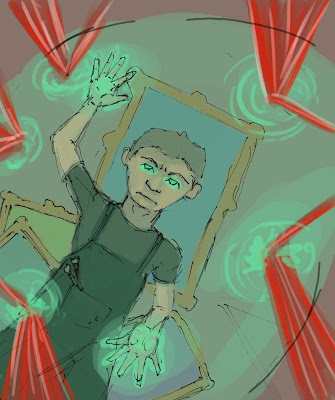
As an artist, it's important to protect yourself and your art during the early stages of creativity and surround yourself with people who support your dreams. Once you've got a good start and are towards the middle of your project, it is then helpful to ask other artists to constructively critique your work, in order to evolve.
As an artist, the art of creating is very personal and vulnerable. So it's important that especially during the first early stages to be selective in who you share your work with. Often, the art needs time to mature, to brew, to cultivate the right way of being expressed. Too many artists make the mistake of exposing this early idea to everyone they know. It's natural to want approval or encouragement/ feedback to keep going. But you want to make sure that it's the right person. At this early stage, it's better to jump and go ahead and explore the idea. Risk being wrong.
Have you ever had a brilliant idea, a wonderful dream, and you run to someone who you think would listen to you and tell them all about it, only to get the wet-blanket response, "eh." A complete and utter disregard, a crushing silence, or even a "well-meaning advice" of "well that's kind of already done before . . . " or "how about this, you can do it this way. . . " Too many projects are crushed this way.
It's much to early even for you, the artist, to judge the work.You need to draw a circle and protect the work. For example, time and time again, Seal had shown her early ideas to the
wrong people. These were often the people closest to her, people whom she had trust. Sometimes they were straight out negative, competitive, or plain clueless in being able to help the artwork. Especially people who don't understand the process of art would look at the early scribbles, first knitted scarf, or failed experiments and judge it as if it was already finished. Or compare your beginning drawings to a great master. ("Well, this certainly isn't a Michelangelo"). Sometimes well-meaning friends and relatives would like to be "helpful" and push their advice unto you, without being asked. "It would be better if you did this." While you will need some of this constructive criticisms later on in the work, when you are just starting on a project, it's best to show it
only to people who trusts in your abilities and potential.
Seal knows that she can show Monkey, her ugly-duckling early sketches of her work before they become full swans. She knows that Monkey will be supportive, and say "yeah, go ahead and explore that." (It may not be the "best idea in the world," but at least it's one more idea that was explored.) The worse thing that can happen is that it doesn't work out.
--
Once you get going on your project. You'll come to a point where you don't know where else to take it. Or you've come up to your limits regarding your skills/knowledge, etc. At this time, is a good time to get constructive criticism. People who won't just be "nice" and say the work is "cool," without giving you ways to improve upon it. You want to be surrounded by people who won't settle, who want to make their own artwork better. And at the same time, the criticisms must be done in such a way that is constructive, specific, and have a respect towards you, the artist, and the work.
There is a difference between specific objective criticisms to the work than a subjective comment. A bad criticism is when its shrouded in generality and attacks the person and not the art: "I don't know what to tell you, it just doesn't work." or "something about this is off" or "this is bad art." (any of these comments don't really tell you "why, they think the way they do" and "how to fix it."
An example of good criticism: My mentor would always look at my work and ask me first, "what's your intention here?" That way he understands where the work is coming from. Then he proceeds to give me
concrete feedback based on an action I can take forward. "If your intention was X, here's Y in how to do it" With good criticisms, there is always 1) a truth (a-ha! I see that, yeah, you're right the color would be better if I saturate it, etc). and 2) specificity about the work itself (never about you the artist), and 3) a clue or answer on how to move forward with the work.
So again, in order to grow as an artist, we must be bold in the beginning stages, stretch our wings and really explore all aspects of our curiosity while being protective of it by only sharing it with people who will be supportive of you. Then after the art has got a good running start, we must find the right kind of people, preferably other creatives like ourselves, who can give us constructive feedback about how to evolve the work.
 What are 3 of your favorite childhood snacks?
What are 3 of your favorite childhood snacks?

